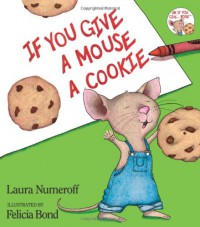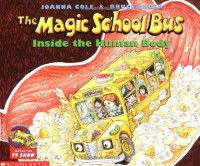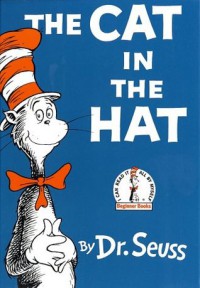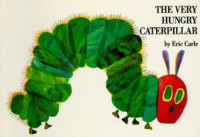
This is such a cute and humerous book! Children will be able to relate to both the boy and the mouse in the story. A very kind boy offers a hungry mouse a cookie. The mouse eats the cookie but then gets thirsty. The mouse continues to want something else after he's finished with what he previously asked for. This could be used for kindergarten or 1st grade. Students could sequence the events in the story, create a cause/effect graphic organizer, or use it for counting activities.

This is a rhyming and predictable text. It could be used for kindergarten. Students could sequence the story with visuals.

Miss Alaineus is such a cute book that is all about vocabulary. Sage, the main character, misunderstands the word miscellaneous, one of her vocabulary words that her teacher gives her. When Sage gets up in front of the class to spell the word miscellaneous, she spells is "Miss Alaineus". This, of course, is embarrassing to Sage when she becomes aware that she misspelled the word. The students called her Miss Alaineus for the rest of the day. Finally, the disaster turned into triumph. Sage dressed up as the Miscellaneus queen for the school's parade.
This would be good to use in grades 3rd & 4th. Students could choose a vocabulary word and create a costume with the word and its definition.

A Bad Case of Stripes, is a story about a young girl, Camilla Cream, who loves lima beans. However, because Camilla's friends do not like lima beans, Camille pretends not to like them as well, just so she can fit in. When Camille wakes up for school, she finds herself covered in rainbow stripes. While shes at school, she finds herself changing colors to match what is around her. Camilla finally sees a specialist who isn't able to cure her, instead, they make it worse. Whatever the specialist diagnoses Camilla with, she ends up looking like. Finally, an old lady comes to see Camilla. The old lady tells Camilla to eat some lima beans. Indeed, that does the trick!
This book is good to implement into a 2nd or 3rd grade classroom. It could be used for cause and effect, problem and solution, learning how to be yourself.
Just Me and My Dad

Just Me and My Dad is a classic from Mercer Mayer's Little Critters Series. It is about a boy and his dad camping. Throughout their camping trip they encounter several mistakes or difficulties. However, in spite of their difficulties, they together have good intentions and manage to set up the tent, catch some dinner, and tell a nice bed time story.
This book would be good to implement into a kindergarten or 1st grade classroom. This book could be read during spring or right before summer, since that would be a good time to go camping. The students could create their own camping trip and who they would go camping with, and what they would take with them, and what they would be doing.

The Berenstain Bears and the Truth is about two bear cubs learning the importance of telling the truth. While mama bear is out, the two cubs start playing ball in the house and knock over mama's favorite lamp. When mama returns and finds the broken lamp, the cubs start making up lies. Mama and papa bear know that they are telling a big whopper and explain to the cubs the importance of telling the truth. This book could be used in a 1st or 2nd grade classroom. It could be used for making predictions or determining that cause and effect.

A Mink, a Fink, a Skating Rink: What is a Noun? is such a cute book. It is full of rhyming words that are nouns. Instead of using text to explain what a noun is, this book uses illustrations to show what a noun is. This would be a great book to use in a classroom for incorporating grammar. This could be used in grades k-2.

The Magic School Bus Inside the Human Body is about a class taking a field trip to the museum to exhibit the inside of the human body. Instead, Arnold, one of the students, swallowed the magic school bus, so the students will be exhibiting the inside of his body. This would be a great book to integrate language arts and science in a 3rd, 4th, or 5th grade classroom.

Coraline is fairytale/nightmare that could be used in grades 5 & 6. This book is about a young girl named Coraline that moves to a new house/apartment. Coraline is an only child and her parents are always too busy and never cook anything tasty or exciting. Coraline explores the new house/apartment and meets her neighbors. The neighbors are a little strange but they are kind and warn Coraline of something dangerous. Coraline discovers a tiny door in the wall where it leads to an entire other world that looks like the one she is living in currently. The other world consists of another mother and father. Her other parents are fun and exciting and want Coraline to live with them, but in order to do so, Coraline must have button eyes. Every now and then Coraline returns home, but day she noticed that her parents weren't home. Coraline grew suspicious and then became aware of the evil that her other mother portrayed. Coraline grew wise and had to be independent to defeat the other mother in which she did.
character analysis, vocabulary, comprehension, writing

Alexander and the Terrible, Horrible, No Good, Very Bad Day is about a boy, Alexander, who is not having a good day. From the time he woke up with gum in his hair, to being deserted by his friends, and having no desert packed with his lunch, Alexander was having a very bad day. His teacher didn't even notice the invisible castle that he drew, and the shoe store was all out of the shoes he wanted. Poor Alexander! He just wanted to go away to Australia. When Alexander went to bed, his night wasn't any better, but his mom told him that even in Australia, some days are like that.
This book could be used for grades k-3.
Sorting Activity: Students will read a scenario provided on cut-out strips of paper and decide whether it represents a good day or a bad day.
Writing Activity: Have students write their own narrative pieces about their terrible, horrible, no good, very bad days.
Art Activity: Have students draw pictures of what they think Alexander’s invisible castle really looked like.

There Was an Old Lady Who Swallowed Some Books! is a fun, rhyming book that could be used in a kindergarten class on the first day of school. This book is about an old lady that swallows several school items that she needs for her first day back to school. The teacher could create an activity where students would drop the various school items from the text into the mouth of the old lady. On each item card, there will be a picture and the word of the item.

In this book, Pinkalicious, a young girl, loves the color pink, especially pink cupcakes! Her parents warn her not to eat too many pink cupcakes, but she does anyway. The next day, Pinkalicious woke up and she was the color pink! OH NO! Pinkalicious and her mother went to see a doctor. The doctor told her not to eat anything else that is pink, but Pinkalicious cannot resist the pink cupcakes. The next day, she wakes up and shes even a deeper pink! Pinkalicious finally stops eating the cupcakes, however, someone else has not. Pinkalicious finds her brother eating the cupcakes, and he too, is now pink!
This book is intended for grades k-2. Students could do cause/effect activities with this text.

The Giving Tree written by Shel Silverstein is such an incredible book. It is about a tree who loved a little boy very much. She was so kind and also giving. As a child, the boy would eat the apples from the tree and use her to play on. This made the tree very happy. As the boy grew older, he begin using the tree for other things, like to make money, to build a house, and to build a boat, until one day there was nothing left of the tree but the stump. This made the tree happy... but not really. One day the boy who is now an old man, returned once more to the tree. The tree sadly says that she has nothing left to give. The old man is completely okay with that for he just wanted to use her stump to sit and rest on. This makes the tree very happy again.
This book could be used in grades k-2. This book could be read around thanksgiving. Students could create their own tree with cut-out apples and have the students write down on each apple what they could give or a thankful for. Also, create a giving tree bulletin board and write items needed for classroom on apples. The parents take an apple at open house.

Dr. Seuss has a series of fun filled books for children. Cat in the Hat is one of his popular ones. This is a great rhyming text that is about two young children that are left at home while their mother goes out for a bit. The little girl and boy are stuck inside because it is too wet and cold to go play outside. As they sit there bored, the cat in the hat shows up. The cat is so fun and exciting to have around but there is just one problem... he has destroyed the house. The kid's pet fish warns them saying that their mother will be home soon and she will not be happy if she sees the big mess they made. To add on top of the mess that has already been made, the cat invites his friends thing one and thing two to come join in on the fun. After the girl and boy realize how messy the house has gotten, the fish yells out that their mother is home. The cat saves the day but pulling out his cleaning machine and gets the house back how it was, just in time before mother walked through the door.
This book could be used in grades k-2. There are several things that you could do with this text:
- -students could build a hat using word families
- -rhyming word sort
- -Cat in the Hat writing craftivity

Bud, Not Buddy is a story that takes place in the 1930s, during the Great Depression. As if the Great Depression isn't hard enough to live through, Bud is having to do it without his mother who is deceased. Bud encounters several people, places, and hunger throughout his journey to find his father, or who he thinks his father is, Herman E. Calloway. Everywhere Bud goes, his suitcases filled with meaningful things does too. Once Bud reaches his destination, he finds Herman E. Calloway, who turns out to be his grandfather. Bud feels a sense of comfort and safety with his grandfather and decides to let go of his suitcase, symbolizing reuniting his mother with her father and finally returning back "home".
This book could be used in a 3-5 grade classroom. It could be used in social studies to discuss the 1930s era and what took place during the Great Depression. Students could also create a symbolism project by making their own suitcase and filling it with things that symbolizes them.

The Very Hungry Caterpillar is a classic picture book. The caterpillar eats his way through each page of the day until he gets full at the end of the week and turns into a butterfly. This book can be used in the classroom for several activities, sequence, retelling, fine motor skills, arts & crafts, days of the week, etc, Intended for grades k-2.



